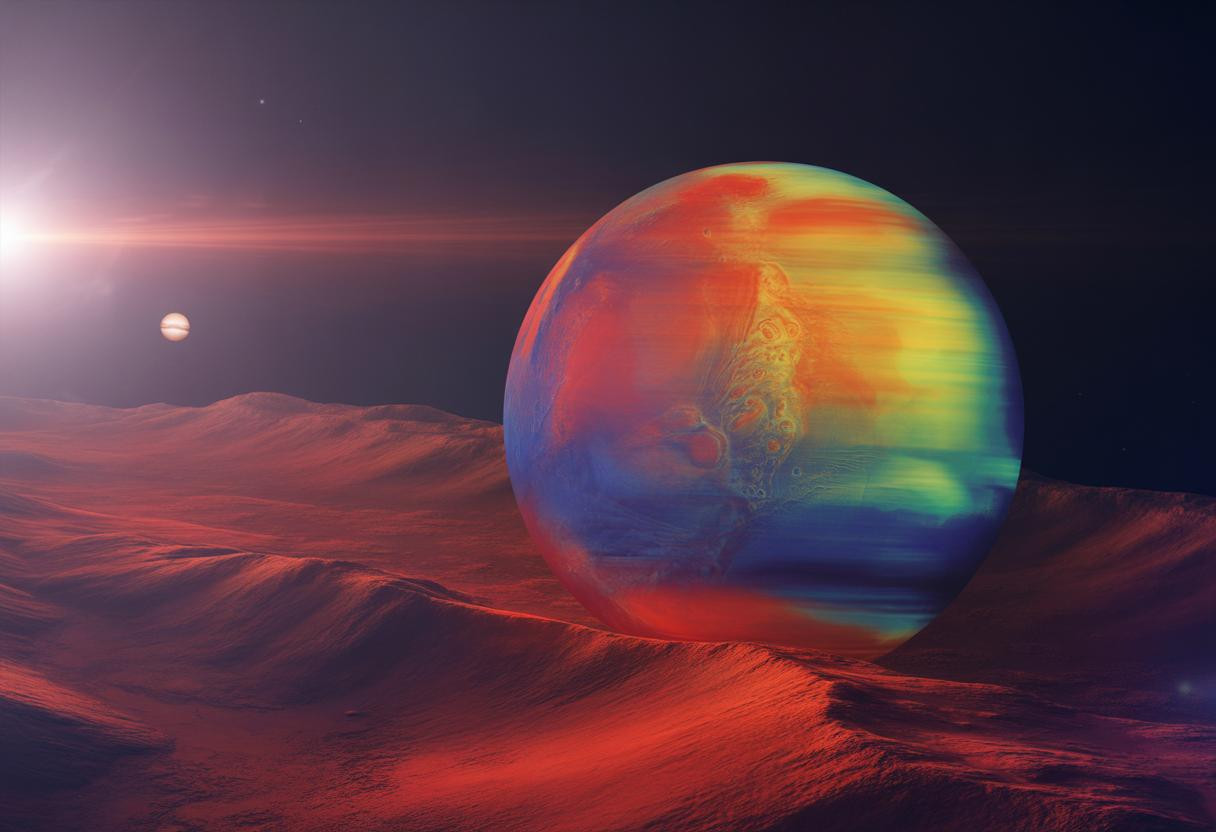The cosmic community is buzzing after NASA’s Europa Clipper spacecraft captured a groundbreaking infrared image of Mars during its recent gravity-assist flyby. This remarkable snapshot, taken in May 2025, reveals thermal patterns across the Red Planet and represents far more than just another pretty space picture.
A thermal portrait that unlocks future discoveries
Using its specialized Europa Thermal Imaging System (E-THEMIS), the spacecraft collected over 1,000 infrared images in just 18 minutes while passing approximately 550 miles above the Martian surface. Scientists transformed these images into a comprehensive thermal map, with warmer areas appearing red and cooler regions showing as blue.
“We wanted no surprises in these new images,” explains Dr. Phil Christensen, Principal Investigator of E-THEMIS. “The goal was to capture imagery of a planetary body we know extraordinarily well and ensure the dataset looks exactly as it should, based on 20 years of instruments documenting Mars.”
Why Mars served as the perfect test subject
This Martian thermal portrait serves as a crucial calibration test for equipment destined for a much more mysterious destination: Europa, Jupiter’s enigmatic moon. Like a photographer testing settings on familiar terrain before heading into uncharted territory, NASA used well-documented Mars to validate the E-THEMIS instrument before its 2030 arrival at Europa.
The scientific goldmine beneath Europa’s icy surface
Europa’s subsurface ocean holds tremendous potential for harboring extraterrestrial life. The infrared technology tested on Mars will help identify where this vast ocean might come closest to Europa’s icy crust.
“If Europa is active, fractures will appear warmer than surrounding ice where the ocean approaches the surface,” notes Dr. Christensen. “This imaging capability is like having X-ray vision that reveals hidden planetary secrets beneath seemingly frozen surfaces.”
Advanced technology pushing exploration boundaries
Infrared imaging represents a significant advancement over traditional visual photography, similar to how Apple’s Vision Pro headset transformed our perception of reality. While conventional cameras capture reflected light, thermal imagers detect heat signatures, revealing phenomena invisible to the human eye.
The breakthrough has implications beyond Mars and Europa, potentially supporting:
- Future astronaut safety through identifying hazardous terrain
- Water resource detection on Moon and Mars missions
- Habitable zone mapping for potential human settlements
When cosmic exploration meets cutting-edge processing
Processing such massive datasets requires computational power that would have been unimaginable decades ago. The thermal mapping technology leverages advanced processors similar to AMD’s recent breakthroughs, handling complex calculations that transform raw infrared data into meaningful scientific insights.
The future of space imaging technology
Infrared imaging’s importance continues growing alongside other scientific breakthroughs, including:
- Material science advances that challenge our understanding, much like CERN’s recent lead-to-gold transformation
- Automation in space exploration that may eventually utilize technologies similar to China’s expanding robotic workforce
- Enhanced deep space communication systems that transmit increasingly complex data back to Earth
What does this mean for our cosmic understanding?
NASA’s infrared imaging of Mars represents more than technological achievement—it’s a bridge connecting our understanding of the Red Planet to potentially life-supporting worlds beyond. Like a cosmic detective gathering clues across planets, this mission demonstrates how exploring one world can unlock the secrets of another, forging our path deeper into the solar system’s most fascinating mysteries.
